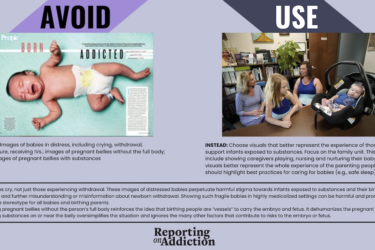
New paradigms are needed to address our growing understanding of the physiology of aging and how it affects the nutrient needs for older adults. That’s the conclusion of a recent report from the Institute of Medicine.
“Meeting the Dietary Needs of Older Adults” highlights key takeaways from a workshop that included a who’s-who of nutrition experts. The presentation summaries provide critical insights into the dietary and nutritional needs of the elderly.
Older adults have lower energy requirements and less efficient absorption and use of many nutrients than do younger adults, said Katherine Tucker, Ph.D. and professor of nutritional epidemiology at the University of Massachusetts, Lowell. Many older adults also have chronic conditions and use medications, both of which affect requirements for a number of key nutrients, including calcium, vitamin D, folate, and vitamins B6 and B12. It is important for older adults to eat a nutrient-dense diet to meet their dietary needs, but Tucker cautions that this can present challenges because of loss of appetite, changes in taste and smell, oral health problems, mobility constraints and limited finances.
Vitamin D is particularly important for older adults because it is needed for bone health as well as a range of other body functions. Numerous reports have highlighted the low intake of this nutrient across the population, but it is difficult to determine the extent of deficiencies because of a lack of consensus on what a deficient level Vitamin D level is. Most older adults are not able to meet the Recommended Dietary Allowance through diet alone, and levels needed for optimal health could be even higher.
Food insecurity is an important environmental factor which influences the food choices older adults make, said Julie Locher, Ph.D., senior scientist at the Nutrition Obesity Research Center at the University of Alabama, Birmingham. She discussed the three pillars of food security: food availability, food access, and food use. All three are needed at all times to support the health and well-being of older adults.
About 5 million older U.S adults experienced food insecurity in 2001, and by 2013 that number had almost doubled. Craig Gundersen, associate professor at the College of Agricultural, Consumer and Environmental Sciences at the University of Illinois, Urbana-Champaign, said food insecurity is more likely among certain older adult populations, who may:
- Live at or below the poverty line.
- Do not have a high school degree.
- Are African American or Hispanic.
- Are divorced or separated.
- Have a grandchild living with them.
- Are on the young side of older adulthood.
Health professionals can help address food insecurity among seniors by encouraging participation in the Supplemental Nutrition Assistance Program (SNAP), reaching out to the socially isolated, helping those with mobility issues, and recognizing the importance of informal food assistance programs.
SNAP is playing a critical, and growing role in ensuring the nutritional well-being of older adults. Older adults tend to participate at much lower rates than other age groups, so there are now efforts to encourage enrollment by increasing awareness of the service, simplifying enrollment, and reducing any stigma associated with being in the program. Lura Barber, director of hunger initiatives at the National Council on Aging, observed that a better understanding of how to better reach SNAP-eligible seniors, especially those eligible for higher-level benefits, is sorely needed.
Merging health and nutrition interventions
Translating nutrition guidance into patient care practice could move nutrition from a support service to a critical health intervention. One example is The Little Clinic program, which involves 181 retail health clinics at Kroger stores in nine states. In addition to the convenience of enabling customers to access health care for routine services, the clinics also provide a way for messages to present messages about healthy eating and lifestyles at the same place where people shop for food. They also provide a way for dietitians to expand their in-store roles. Despite these benefits and potential opportunities, clinics face legislative, regulatory, payer, and medical culture barriers to their expansion.
Another successful program is run by P.E.E.R. Inc. in the East Lake neighborhood of Birmingham, Alabama. It provides assistance with nutrition needs to low-income older adults through service that include a farmers’ market, home-delivered food baskets, SNAP incentives, a mobile market, and a chef’s apprentice program. New York City’s Healthy Neighborhoods program integrates emergency food services, food retail initiatives, partnerships with food retailers, nutrition education programs, and community partnerships. It uses City Harvest’s food distribution infrastructure to improve access to healthy food, increase awareness of healthy habits, and encourage positive behavior change.
“There’s more to nutrition than the food,” Melinda Hemmelgarn, M.S., R.D., host of Food Sleuth Radio, explained in an email. She said the biggest issues facing the elderly with nutrition include:
- Access to dental care. Some elderly can’t eat many of the recommended fruits and vegetables if they don’t have functioning teeth.
- Inadequate income or lack of access to nutrient dense food. Hemmelgarn includes organic food in her recommendations because of its higher nutrient density, especially protective secondary plant compounds (the anti-oxidants), and higher levels of omega-3 in relation to omega-6 fatty acids in milk and dairy from pasture-raised animals.
- The farmers market nutrition programs that give the elderly poor access to fresh market purchases are terrific for improving nutrition and getting elderly people into a nurturing community setting on a regular basis. But reimbursement rates are pitifully low, and many states may not even offer the benefit.
- Hemmelgarn encourages seniors to find ways to schedule pot-lucks that mix socializing with eating.
- Drug side effects, which can change taste, appetite, and create interactions with certain foods and beverages.
What is your community doing to address the nutrition needs of older adults? Here are some additional resources:
- This AHCJ tip sheet from Hemmelgarn on nutrition and aging explains what reporters should be aware of when reporting on the issue.
- The Mayo Clinic also offers advice and tips for caregivers.







